Atmel Wireless Solutions for IoT

We present an overview of Atmel’s new wireless products released in 2015 and positioned as solutions for use in the development of Internet of Things devices. From Atmel’s point of view, miniaturization, a high degree of integration of solutions, low consumption and low cost are fundamental requirements for such products.
In the article, attention will be paid to the WiFi, BLE lines and Cortex M0 microcontrollers with a built-in 2.4 MHz radio transmitter.
Wifi
ATWILC1000
SoC (System-on-Chip) with SDIO interface, designed to work with the microprocessor as a host. The chip does not contain a TCP / IP stack, so its work with microcontrollers is not the main option, although theoretically, of course, it is possible. The Linux driver on the ATWILC1000 is part of the standard kernel assembly for SAMA5 processors.
In addition to SDIO, which is used to control and transmit data, the chip has a set of optional interfaces I2C Slave (for control), SPI Master (for interacting with external flash-memory), I2C Master (for working with external EEPROM), UART (for outputting debugging information), 9 input / output ports. It is also possible to transmit data via UART. In this case, the speed will be much lower.
This solution is produced both in the form of a separate chip in the QFN-40 and WLCSP (something like BGA) cases, and in the form of an SMD module under a metal shield and a divorced antenna.
The execution in the form of a chip requires an external quartz with a frequency in the range of 12-40 MHz and is available in the following modifications:
- ATWILC1000B-MU-T - housing QFN-40, 5 × 5 mm
- ATWILC1000B-UU-T - WLCSP Enclosure (55 pins), 3.25 × 3.25 mm
Options in the form of a ready-made module:
- ATWILC1000-MR110PB - module with chip antenna and PCB antenna
- ATWILC1000-MR110UB - module with chip antenna and uFL connector
The dimensions of the modules are 22 × 15 mm.
ATWINC1500
WINC1500 is a “network” controller containing a TCP / IP stack and designed to work with the microcontroller as a host. WINC1500 is not demanding on the resources of the microcontroller, so it can work with almost any stone as a host, including AVR and Cortex M0.
Technically, the WINC1500 is the same WINC1000, but with a built-in flash drive that contains the TCP / IP stack. In one of our past articles, we already talked about an example of working with this module.
Executions:
- ATWINC1500B-MU - as a separate chip, the ATWINC1500 is available in the QFN-40 package.
- ATWINC1500-MR210PB - in the form of a module, simpler to use design similar to WILC1000.
ATSAMW25
SAMW25 is a Wi-Fi module combining a WINC1500 chip and a SAMD21 microcontroller with an ARM M0 + core under one shield. The peripherals of the built-in controller are output to the external pins of the module. Thus, in the end device, you can do without a host controller at all. For the developer, this solution allows to simplify circuitry, reduce the occupied area and the total cost of the BOM. At the same time, the programmer works with the module as with a conventional microcontroller.

The use of modules, in addition to simplifying the circuitry, avoids the mandatory certification of the end device required when using a separate chip, as the modules are already certified by Atmel.
Debugging Tools
ATWILC1000-SD - debugging for installation in the SD card slot. A strange, too elongated form is unlikely to allow the use of such a form factor in a real device, but in fact such a goal is not set for it.
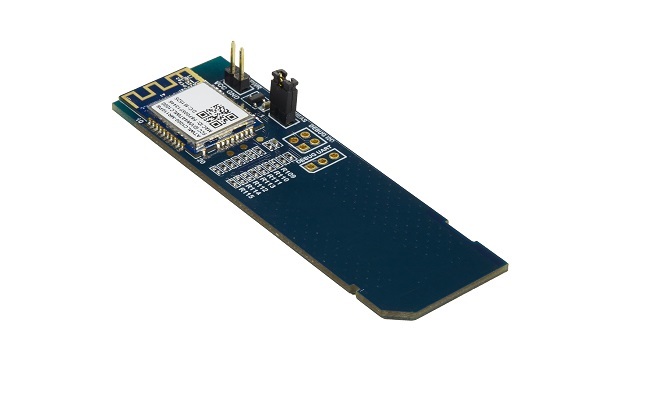
ATWINC1500-XSTK is a debugging kit that includes an Xplained board with a SAMD21 microcontroller and 2 expansion cards: the first with a temperature sensor and a micro SD slot and the second, in fact, with the WINC1500 module.
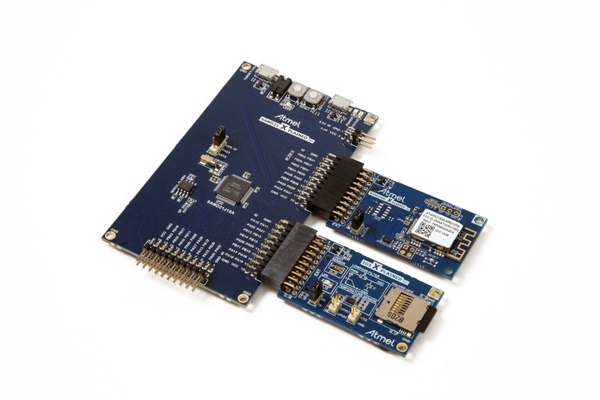
ATWINC1500-XPRO is an expansion board with a WINC1500 module. This is the same board that is part of the CIT above, only separately. Since in the debugs of the Xplained Pro Kits series all expansion cards have a universal external pinout, this board can be connected to any Xplained debugging.
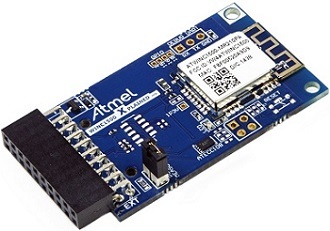

ATWINC1500-XSTK is a debugging kit that includes an Xplained board with a SAMD21 microcontroller and 2 expansion cards: the first with a temperature sensor and a micro SD slot and the second, in fact, with the WINC1500 module.

ATWINC1500-XPRO is an expansion board with a WINC1500 module. This is the same board that is part of the CIT above, only separately. Since in the debugs of the Xplained Pro Kits series all expansion cards have a universal external pinout, this board can be connected to any Xplained debugging.

Bluetooth
The Bluetooth line has a slightly different approach than the Wi-Fi line:
- ATBTLC1000 - the so-called link controller - SoC, which implements all levels of the BLE4.1 stack. The stack is stored in ROM. To work, you need a host controller connected via SPI or UART. Also, the chip can execute a program recorded in an external flash-memory connected via SPI.
- ATSAMB11 - SoC obtained by adding flash inside the chip body. The result is an integrated single-chip solution in which user firmware is written and executed internally.
The solution is based on the core of the Cortex M0. To perform a custom function, the chips have a set of peripherals: GPIO, 2 × SPI, 2 × UART, 2 × I2C, 4 × PWM, 2 ADC channels 11 bits, etc.
ATBTLC1000
Several designs are available:
- ATBTLC1000A-MU - housing QFN-32, 4 × 4 mm.
- ATBTLC1000A-UU - WLCSP housing, 31 pins, 2.262 × 2.142 mm. Unlike the case, QFN contains slightly less GPIO.
- ATBTLC1000-MR110CA - execution in the form of a ready-made and certified module, dimensions 20 × 12.7 mm.
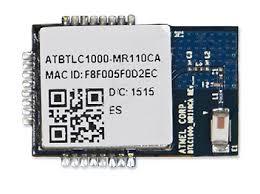
ATSAMB11
Physically, this is the same BTLC1000 with a built-in flash drive into which the stack is crammed.
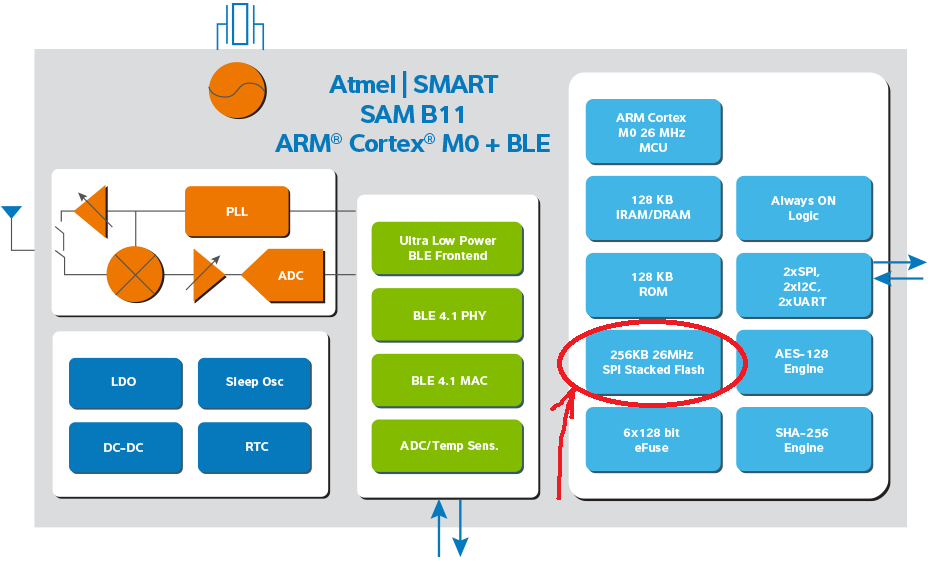
According to the tradition of execution in the form of a chip and a module:
- SAM B11 - SOC in the case of QFN-48, 6 × 6 mm
- SAMB11-MR210CA - module with 40 pads and dimensions of 22.9 × 15.4 mm
Debugging Tools
BTLC1000 Xplained Pro Starter Kit - a development kit that includes debugging Xplained Pro with a low-power SAML21 Cortex M0 + controller and an expansion board with the ATBTLC1000-MR110CA module installed.
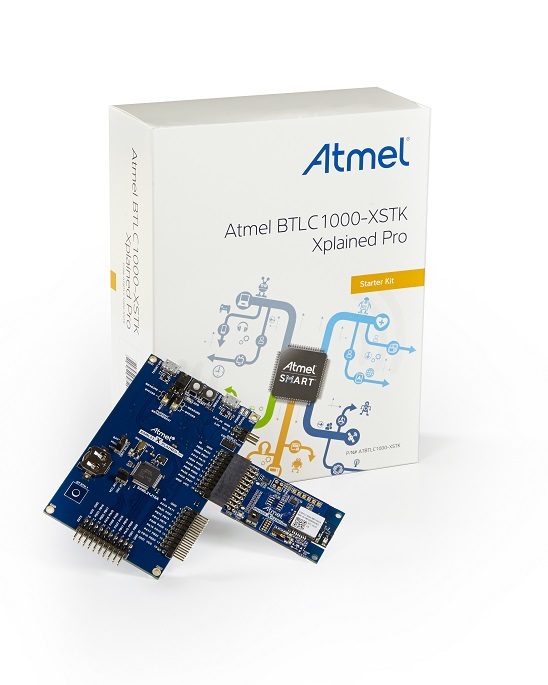
BTLC1000 Xplained Pro Evaluation Kit is an expansion board with the ATBTLC1000-MR110CA module separately, for those who do not need debugging for SAML21. Suitable for installation on any Xplained Pro Kits series board .
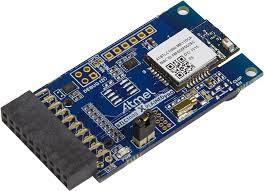

BTLC1000 Xplained Pro Evaluation Kit is an expansion board with the ATBTLC1000-MR110CA module separately, for those who do not need debugging for SAML21. Suitable for installation on any Xplained Pro Kits series board .

ARM Cortex-M0 + based IEEE 802.15.4 Wireless MCUs
To build a network of radio sensors and actuators, Atmel in 2015 introduced a new family of crystal systems - SAMR21 - a microcontroller with a Cortex M0 + core with an integrated 2.4 GHz radio transceiver.
The characteristics of the microcontroller itself are similar to the SAMD21 family:
- Core frequency 48 MHz
- Up to 256 KB flash
- Performance 2.14 CoreMark / MHz
- 12 DMA channels
- Consumption less than 70μA / MHz
- Up to 5 universal communication modules SERCOM
- Integrated Touch Button Controller
- 12 bit ADC
- Full Speed USB device and host
Available Enclosure Options:
Atmel Studio 7 has a large number of examples, including ported 6LoWPAN and LwMesh stacks.
Debugging Tools
SAM R21 Xplained Pro Evaluation Kit is a debug board for the ATSAMR21G18A microcontroller, with an integrated debugger and two combs for installing expansion cards.
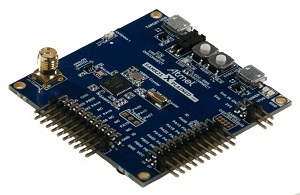
SAM R21 ZigBee Light Link Evaluation Kit - debugging with a stone similar to the previous whale, but with richer peripherals on the board. Added OLED display, touch buttons and slider, RGB LED and more.
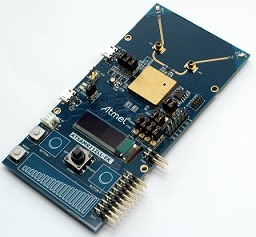

SAM R21 ZigBee Light Link Evaluation Kit - debugging with a stone similar to the previous whale, but with richer peripherals on the board. Added OLED display, touch buttons and slider, RGB LED and more.

